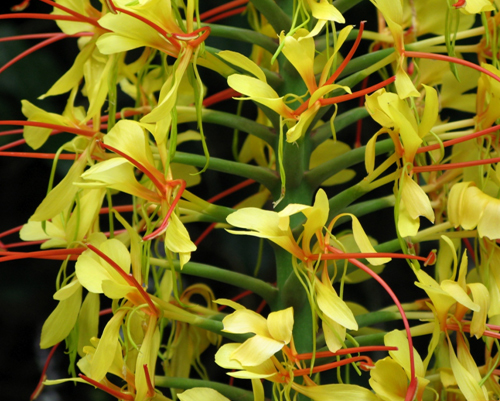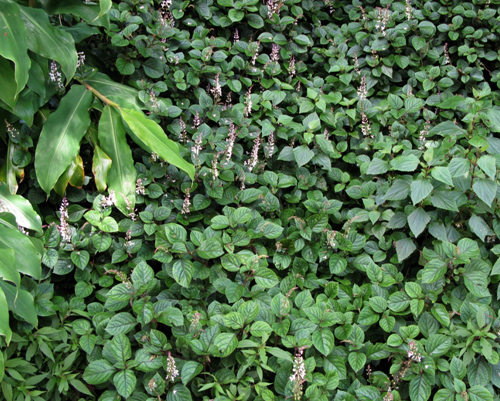Whilst unaddressed abiotic impediments may, in the end, undermine attainment of our aspirational goals, biotic barriers such as runaway competition from seriously spreading and damaging weeds can not only result in early failure of the project but also lead to loss of the surrounding World Heritage Area and National Park, potentially spreading further to the entire caldera area. The most pernicious of these, Aristea ecklonii in the Iridaceae family, represents a new class of emerging shade-tolerant, rhizomatous weeds that invade undisturbed environments. Because of its exceptional clumping, colony-forming, light-blocking, nutrient capturing and dispersal abilities, together with the lack of cost-effective and ecologically benign control measures in sensitive environments, the weed can ultimately replace whole forests by inhibiting their regeneration in the long-term. Other weeds that need similar urgent attention include Kahili Ginger (Hedychium gardnerianum), Montbretia (Crocosmia x crocosmiflora), Speckled Spur Flower (Plectranthus ciliatus), and some of the most intractable exotic grasses invading the Springbrook area. Plant and animal pathogens present a formidable challenge, particularly Myrtle Rust (Puccinia psidii)1 and Chytrid Fungus (Batrachochytrium dendrobatidis) both of which are capable of causing cascading extinctions of myrtaceous plants and frogs respectively. Both are now extensively present at Springbrook. More details on each of these major threats are provided in the associated web pages: Aristea ecklonii; Kahili Ginger; Myrtle Rust. 1 There has been considerable confusion regarding the identity of the rust epidemic infecting the Myrtaceae in Australia. Recent research by the CSIRO have confirmed the presence of teliospores in the rust pathotype thus confirming the pathogen to be Puccinia psidii (Eucalyptus Rust) rather than Uredo rangelii (Myrtle Rust) as was originally thought (Morin 2011, www.anbg.gov.au/chabg/myrtle-rust/powerpoint/Morin-Myrtle-Rust-Workshop-anbg-10-March-2011-reduced.pdf). |
||||||||||||||||||||||||
 Aristea ecklonii (Blue Stars) Photo: Aila Keto |
||||||||||||||||||||||||
 Hedychium gardnerianum (Kahili Ginger) Photo: Aila Keto |
||||||||||||||||||||||||
 Plectranthus ciliatus (right); Kahili Ginger (left) on the road verges on Springbrook Road. The weeds have spread to many locations including Repeater Station Road. Photo: Aila Keto |
||||||||||||||||||||||||
 Myrtle Rust infection of Rhodamnia maideniana (Myrtaceae) at Springbrook. Photo: Aila Keto |